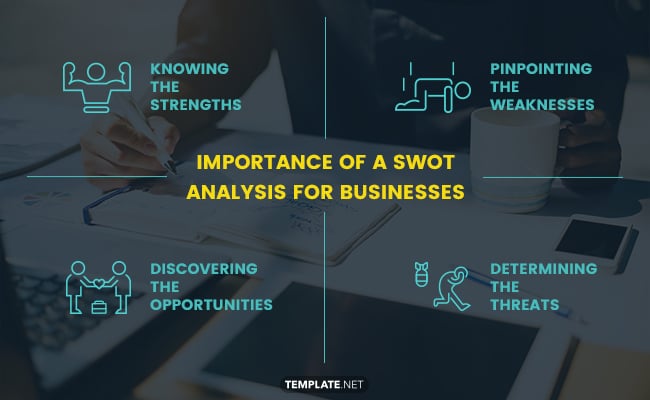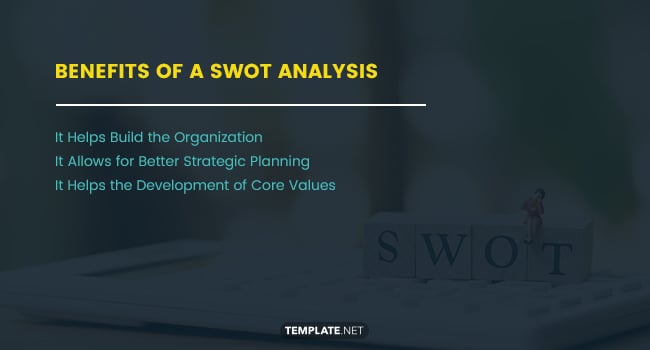How to do a SWOT Analysis – Step by Step Guide
Companies have different goals—some are long-term, while others are short-term. Achieving them requires various approaches just to arrive at the best strategy. Whether an entrepreneur is only starting out or looking to grow an existing enterprise, an efficient business plan becomes necessary. To create that foolproof plan, a SWOT analysis will come in handy. This article will discuss its processes, as well as its benefits for any company. The actual procedure may look complicated at first, but the results are guaranteed to be helpful.

How to do a SWOT Analysis – Step by Step Guide
What is a SWOT Analysis?
A SWOT analysis is a planning technique that highlights an entity’s strengths, weaknesses, opportunities, and threats. By identifying these elements, an organization can formulate plans to improve their present situation. As an evaluation tool, its results can either make or break existing plans of an enterprise. The analysis involves looking at both internal and external elements that affect the firm’s decision-making processes. For example, when the company plans on boosting sales for a particular product, a SWOT analysis can determine the stance of the goods. Through the review, the company can make adjustments to ensure their goal is achievable within a specific time frame.
Importance of a SWOT Analysis for Businesses

As mentioned before, a SWOT analysis deals with identifying internal and external factors that affect the position of a business. How is this significant, you ask? Well, the answer to that goes back to the details obtained from the analysis. Another example is when a SWOT analysis for a new product comes back with surprising results regarding its feasibility. With the competitive and statistical data taken from the analysis, the company can make necessary changes to further enhance their plans for that specific product. No matter the size or feature of your product, there’s no denying how indispensable this analysis is to any business. Each of its four components focuses on different aspects, enabling planners to properly evaluate the results for greater improvement. With that said, here are further details of the four components as well as its individual key points:
Knowing the Strengths
It always starts with looking at what’s favorable and advantageous for the company. In creating this analysis, planners need to know and understand what their business brings to the table. Should the focus be on specific products or services, one suggestion is to look at what the customers have to say so far. There’s also the profit and loss statements to consult. Remember that the strengths are innate to the business and is something the company can control. For example, one strength can be a company’s financial independence. Acknowledging this strength can prevent unnecessary actions like spending hours searching for more investors.
Knowing the company’s strong points will require answering three simple inquires. First, what elements help make your business distinct compared to the competition? Second, what have your customers or clients said about you, especially in a positive light? Lastly, what skills and knowledge do you possess that allows you to leapfrog over your competitors? In answering these, you can better determine what your company’s strengths are.
Pinpointing the Weaknesses
On the opposite side of the spectrum are your company’s weaknesses. Pinpointing flaws are as crucial as looking for strengths because it provides room for corrective action. Some examples include unfriendly policies, unjust compensation, poor communication between individuals or groups, and fault leadership. But how can analysts discover these weaknesses? The answer lies in placing focus on both employees and constituents. Get information straight from those who understand what goes on in the workplace. Like strengths, these are internal factors that the company can personally see to. A specific example would be unproductive employees and what management can do to motivate them into being the opposite.
Like with its strengths, at least four questions can help companies determine its weak spots. First, what general improvements can be done to your business? Second, what negative feedback have you acquired from your clients? Third, what are the identifiable gaps between your workers? Lastly, what assets do your business need but presently lack?
Discovering the Opportunities
Every company meets different forms of opportunities every day. Characterized as positives to an enterprise, these are external factors that are capable of affecting the flow of business. A perfect example would be business trends that influence customer purchasing decisions. If the company focuses solely on clothing, then it would be wise to learn more about said trends so that it becomes easier to adapt to the changing attitudes. The discovery of opportunities lie in thorough market research and situational analysis, which are two things analysts need to take note of.
These three general tips are applicable to your discovery process. One is the observation of trends, as stated in the example. Another is the observation of economic and law-related changes that can positively impact the company. The third and last tip is to keep track of specific events that hold weight with your company. With those events, the company can showcase their assets or educate themselves with new concepts to improve their proceedings.
Determining the Threats
The last component to tackle is the threats that needs determining. These are either the external or internal factors that can hinder your business’ development. Some come in the form of unfavorable circumstances that can take your company by surprise. Others are festering problems that plague the teams that run your operations. Many threats lead to unforeseeable—and therefore uncontrollable—outcomes, although just as many are reversible with enough preparation and foresight.
If you want an example, imagine discovering a trend that pushes your products out of style. This is something that befell Nokia; the emergence of smartphones with touch screen technology pressed the once highly-esteemed company to bankruptcy. It might not have been the only reason, but there’s little doubt it played a role in its owner’s decision to sell the company. Learning from their example means finding better ways to scrutinize threats to find the appropriate solutions.
Strategies to Incorporate
Having covered the significance and its main components, the next step is acknowledging what strategies you can incorporate. Imagine having finally obtained the results of your SWOT analysis. As a business owner, its your responsibility to ask yourself just how you plan on using your newfound knowledge. The most common scenario involves updating your business plan. If, for example, your analysis centered around your marketing, then it’s best to zone in one the specifics of your findings like how you can take your strengths and combine them with the present opportunities. In this example, it may lead to the use of digital marketing to reach out even further to potential customers that your traditional marketing tactics haven’t touched.
Another example of strategies incorporated as a result of your findings would be discovering that a weakness lies in the gap between your employees’ skills and that of your competition. Perhaps for this example, you decide that a better and more comprehensive training program is needed, thus taking care of the weakness and mitigating the threat posed by competitors. Remember that performance improvement falls into development plans that companies can draw up to enhance their workers’ overall competency. Alternatively, your company may even organize seminars to educate yourselves even further. Ultimately, all these things are possible only if your company is made aware of its overall standing. Take advantage of the benefits provided by SWOT analyses and you’re bound to see a surge in improvement.
Benefits of a SWOT Analysis

Speaking of benefits, these deserve an entire section of their own. Singling the major ones out serve to further highlight what you can do with the findings of any SWOT analysis you decide to conduct. Without further ado, take a closer look at the following:
It Helps Build the Organization
Knowing about your strengths can only take you so far, and the same goes for learning about your weaknesses. Having knowledge of both uplifts your company, allowing for a reorganization of its structure if necessary. A well-built company breeds a more stable and healthy environment for everyone involved, which is why a SWOT analysis often proves crucial.
It Allows for Better Strategic Planning
With knowledge comes a greater capacity for wisdom, which is a foundation of any strategic planning process. It applies to a wide range of business-related things, from company policies to in-depth marketing plans. A SWOT analysis helps provide you with both great knowledge and wisdom to be more efficient with your plans.
It Helps the Development of Core Values
A clean image and a fantastic public reputation are both necessary for companies to thrive. Industry leaders prove not only impeccable competence in their field, but also a staggering degree of reliability. Through the use of a SWOT analysis, businesses gain greater insight regarding how to cultivate core values that they can live by.
Growth is the ultimate goal of companies, regardless if it is long-term or short-term. As shown above, it is in proper preparation and the pursuit of knowledge that makes up the greatest of strategies. A SWOT analysis can help ensure a brighter future—provided you know how to use it the right way. There’s no doubt now in anybody’s mind in regards to its usefulness and value to any company.






